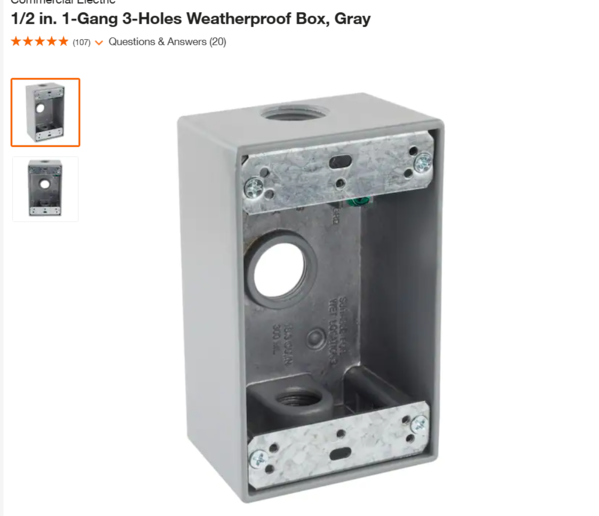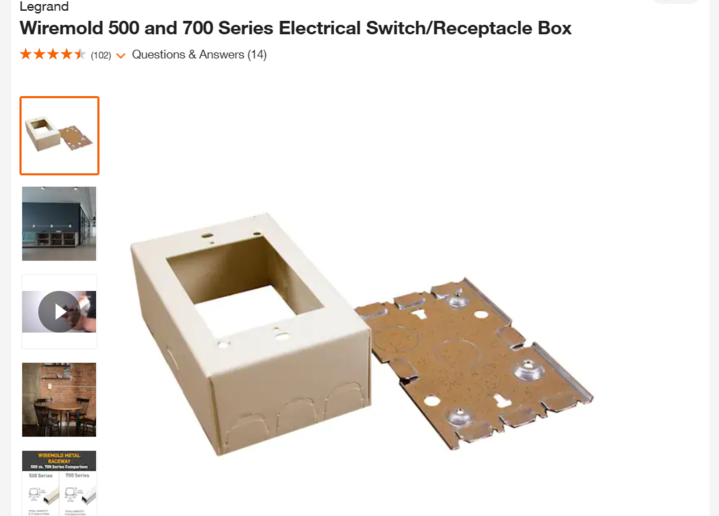john in la
Well-known Member
Show me a picture or provide a link to a surface mount electric box that will pass residential code.
I understand the wire to the box will have to be in conduit.
What I am trying to do.
I have a older mobile home my son lives in.
The wall outlets are run with 14 gauge wire to multiple plugs.
I do not feel this wire will support a window A/C or space heater when things are plugged in other plugs in the line.
So I ran a dedicated 12 gauge wire to the area to run the window A/C.
Im trying to avoid tearing into the wall so I want to mount a box either on the wall or at the intersection of the wall and the floor,
The wire will come up through the floor next to the wall.
But this can not be some rigged up garage concoction as young children live in the house.
So it has to pass code.
I understand the wire to the box will have to be in conduit.
What I am trying to do.
I have a older mobile home my son lives in.
The wall outlets are run with 14 gauge wire to multiple plugs.
I do not feel this wire will support a window A/C or space heater when things are plugged in other plugs in the line.
So I ran a dedicated 12 gauge wire to the area to run the window A/C.
Im trying to avoid tearing into the wall so I want to mount a box either on the wall or at the intersection of the wall and the floor,
The wire will come up through the floor next to the wall.
But this can not be some rigged up garage concoction as young children live in the house.
So it has to pass code.



